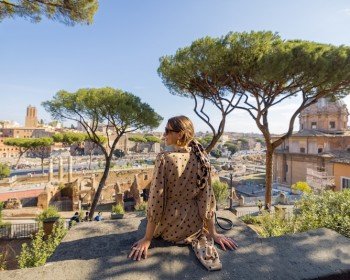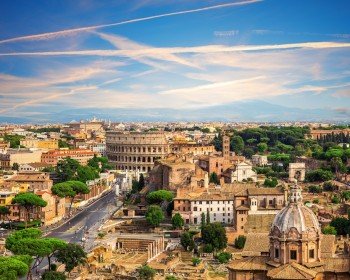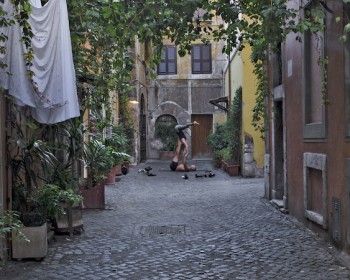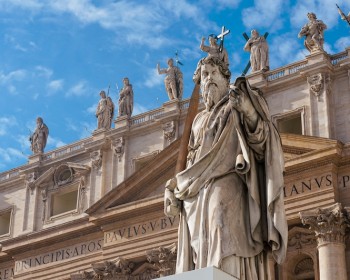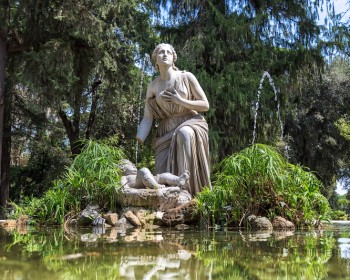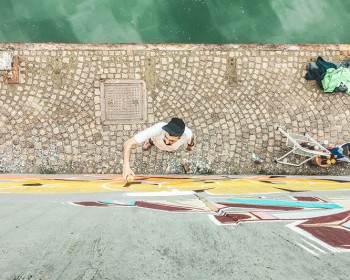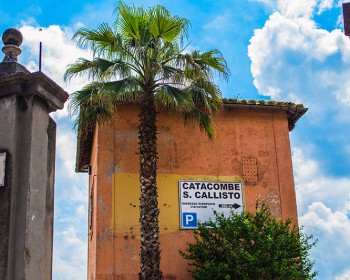All around the world there are a lot of stereotypes about the Italian people."Pizza", "spaghetti", "mandolino" and "mafia", not to mention the idea that we live without rules and respect but we mean with passion, or that thanks God men and women are so gorgeous... One of the most common ideas is that Italians are noisy and always chatting and talking loud. But, are you sure in Italy just people are able to talk? I am not.
The talking statues of Rome (statue parlanti in Italian) or the Congregation of Wits is a group of Statues - traditionally six - famous for being the mean through which people used to criticize or make sarcastic remarks about the Pope and the authorities in general, since the 16th century. In particular, Romans got used to affixing messages against corruption and arrogance on these six statues - and sometimes they still do! - that became so familiar to the city that people started to call them by personal names: Pasquino, Marforio, Madama Lucrezia, Abate Luigi, Il Facchino and Il Babuino.
Lots of Popes tried to stop this habit of moving the statues or guarding them day and night, but in vain.
For sure the spokesperson for popular discontent was not part of the roman working class, the majority of which was illiterate, it had do be academics, intellectuals or members of Roman noble families who contrasted the papal hierarchy and shared their dissent through these popular tools.
Pasquino
It is the most famous of these six "talking statues" of Rome and became renowned between the centuries 16th and 19th. Probably "Pasquino" derives from the name of a barber, a blacksmith, a tailor or a cobbler near whose shop the statue was found. According to some other popular beliefs Pasquino was the owner of a restaurant located in Piazza di Parione (today known with the name of Piazza di Pasquino) or a teacher whose students, having noticed some similarities with the statue itself, started to mock him affixing papers with messages on his neck.
With the passing of the time these messages started to become actually signs or posters written with aggressive and brute satiric comments about popes first of all, who were taking their life to excess while Roman people were struggling. These posted messages started to be also known as "pasquinate" from the name of Pasquino exactly!
The statue is a fragment of a previous work in a Hellenic style dating back to the 3rd century. Its face and limbs are damaged and it may represent Menelaus, a character of the epic poem the Iliad.
Pasquino kept quiet until 1938, when he re-emerged during preparations for Hitler's visit in Rome to highlight and criticize the fact that the government was placing cardboard panels to keep out Roman suburbs and their poverty from Hitler's sight.
Marforio
It is the second statue in importance to Pasquino with which Marforio (or Marphurius) sometimes exchanged dialogues: generally one of them asked about social and political problem and the other one answered properly making a cutting remark, so that it was necessary to choose a guardian to watch over them and limit this back-and-forth exchange and, of course, prevent the Romans from writing their satires.
The statue, a huge marble sculpture from the Roman era, represents a bearded character lying on his side, maybe Triton or something related to the water, like the divinity Neptune or the personification of the Tiber River. The name probably derives from the Martis Forum, where the statue was first located in front of the Mamertine prison. Though there are different theories about the origin of the name, for example an inscription on the statue not visible anymore saying "mare in foro", or another one assuming that Marforio comes from the name of a noble family who owned a property near the Mamertine prison, where the statue remained until 1588.
Under the statue there is a tub too, that at the beginning was used like a drinking trough.
Madama Lucrezia
It is the only one statue in the "Congregation of the Wits" representing a woman. It is a marble half-bust from the Roman era located on the corner of Altare della Patria (Altar of the Fatherland) and St. Mark's Basilica, in the Piazza of the same name. Like other statues we don't know the real character represented by this statue, probably the Egyptian goddess Isis or one of her priestesses due to the fact that the bow of her dress on her chest reminds that culture. The name derives from Alfonso V of Aragon's mistress name, Lucrezia, who was sent away from Naples and forced to live in Rome. During the Roman Republic, in 1799, the statue falls from the pedestal and broke in eight pieces, and someone from the Roman people, wrote on the back of the statue itself: "I can't look at this any longer" alluding to the government in force.
Abate Luigi
The statue symbolizes an orator or a magistrate wearing senator's robes. It was the popular imagination that gave to the statue this name because of the similarity between the statue and the sexton of the Church of the Most Holy Shroud at the Argentina whose name was Luigi. Due to the fact that the statue was located outside, its head had to be replaced by another one in 1888 when the statue was relocated at Palazzo Caffarelli-Vidoni. This new head was stolen around 1970 and was replaced, again, with a cast of the copy preserved at "Museo di Roma in Trastevere".
Il Facchino (The Porter Fountain)
It is the youngest between the speaking Statues and represents an "acquarolo" (a term from the Roman dialect used to indicate the man who sells the water) with the face almost completely injured while pouring water from his barrel in the fountain. The Aqua Virgo supplies the fountain and its name indicates the term through which acquaroli were denominated until the 20th century, that is to say "facchino" men that until the 16th century filled their barrels with water from the Tiber River or from Trevi Fountain during the night and then sold it on the street during the day, before the aqueduct was active again. It was carried out by the sculptor Jacopo Del Conte on behalf of the "Acquaroli Association" and now it is located on the corner of Via Leta and Via del Corso, one of the most famous streets in Rome.
Il Babuino
It shows a satyr with a grotesque expression adorning a tub fountain. The statue in its entirely turned out to be ugly and deformed so much that it looked like a baboon which became so much famous that influenced the imagination of the Roman people who claimed the name of the street changed from via Paolina to via del Babuino. It was created in honour of the Pope Pio V that in 1571 allowed some ounces of water from the new Aqua Virgo, one of the eleven roman aqueducts that supplied the city of ancient Rome, to get to the noble Grandi's palace in front of which the statue is still located. In 2007 an iron grating was set around the fountain to protect it from acts of vandalism.
So if you find someone talking alone on the street, well don't make up your mind so soon. Maybe they are just talking to these statues!


